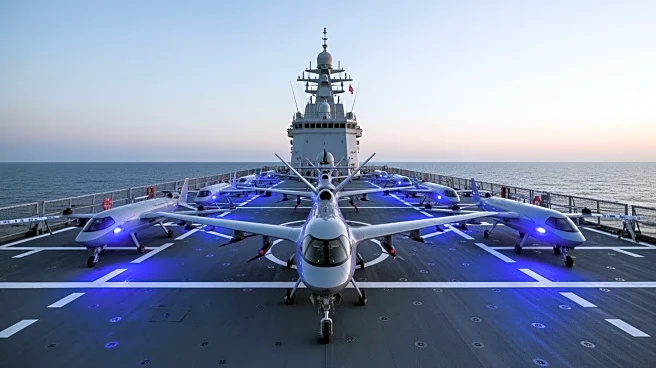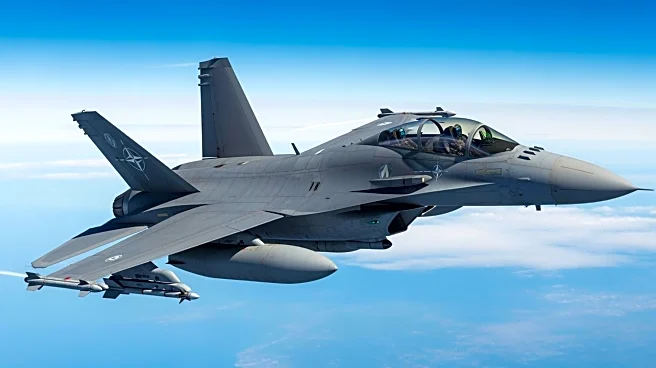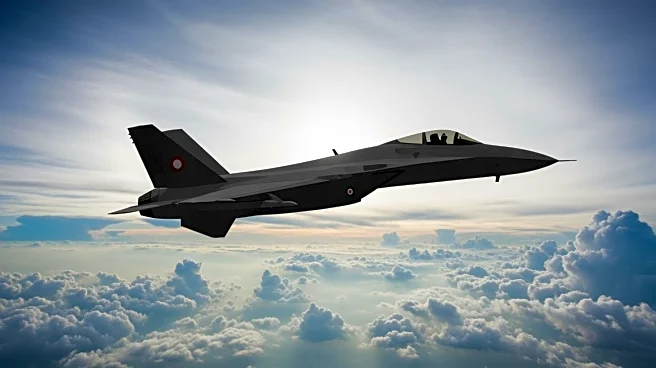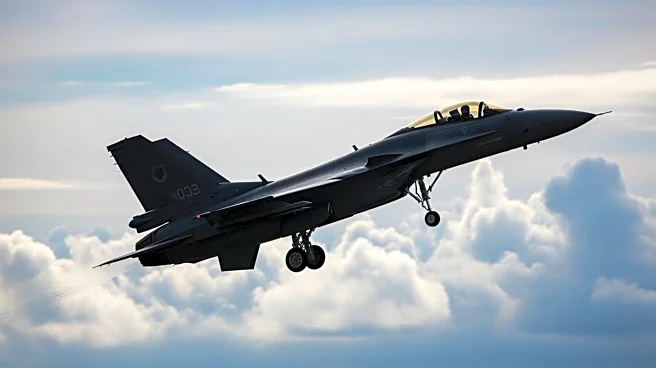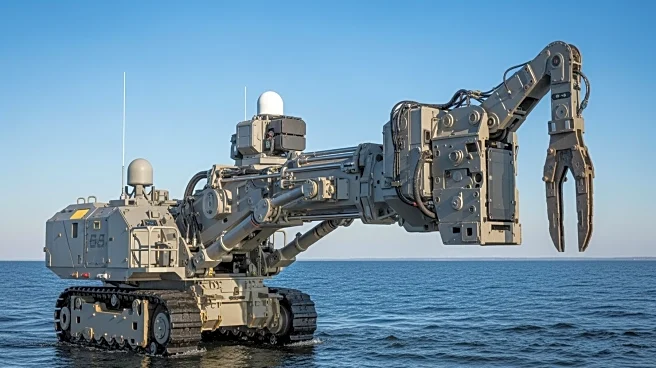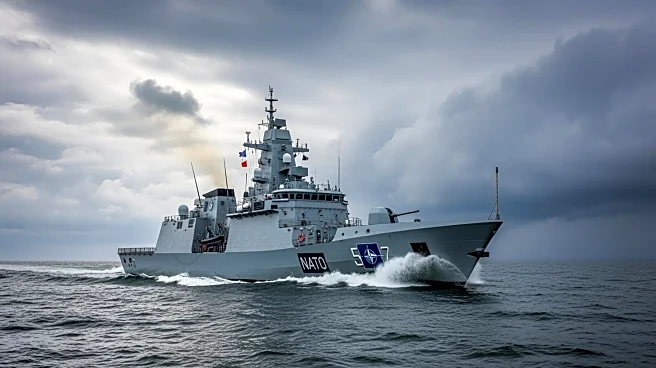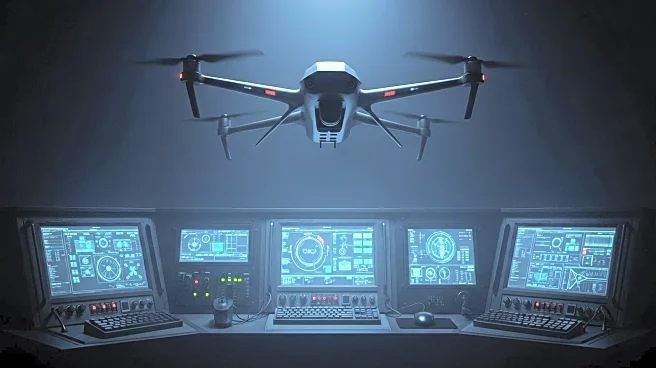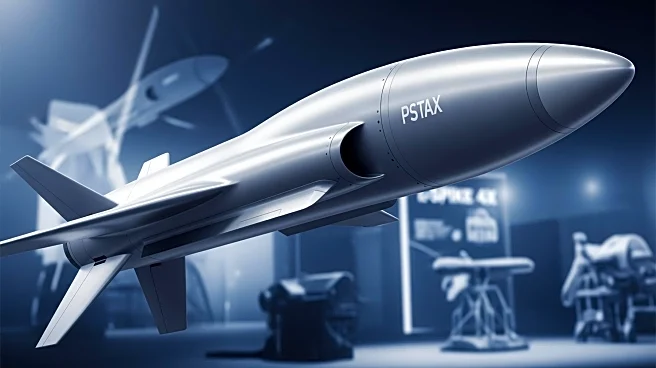What's Happening?
NATO is in the final stages of developing STANAG 4817, a standardization agreement aimed at improving interoperability among maritime unmanned systems (MUS). This initiative is part of NATO's broader effort
to enhance command-and-control (C2) capabilities for unmanned systems, particularly in the Baltic Sea region. The agreement seeks to establish a common reference architecture and standardized interfaces across multiple C2 layers, facilitating the integration of unmanned systems into wider multidomain operations. The development of STANAG 4817 follows several incidents involving critical undersea infrastructure in the Baltic between October 2023 and December 2024, highlighting the need for improved surveillance and situational awareness. The agreement is expected to support the operational use of unmanned underwater vehicles (UUVs) and unmanned surface vehicles (USVs) by providing a blueprint for platform interoperability and data integration.
Why It's Important?
The implementation of STANAG 4817 is crucial for NATO's ability to conduct effective maritime surveillance and counter underwater threats. By standardizing the architecture and interfaces for unmanned systems, NATO can enhance its operational agility and interchangeability, which are vital for maintaining security in the Baltic Sea and other strategic areas. This development is particularly significant given the increasing demand for unmanned systems in anti-submarine warfare, mine countermeasures, and the protection of critical undersea infrastructure. The standardization effort also addresses the challenges of operating UUVs in bandwidth-limited underwater environments, enabling NATO member states to deploy these systems more effectively. As more industry stakeholders produce UUVs and related technologies, the need for a unified standard becomes increasingly apparent, ensuring that NATO can leverage these advancements for collective security.
What's Next?
STANAG 4817 is undergoing test and evaluation in operational experimentation activities, such as Task Force X Baltic, to ensure its effectiveness in real-world contexts. Once ratified, the agreement will provide NATO with a robust framework for integrating unmanned systems into its maritime operations. This will likely lead to increased collaboration among NATO member states in developing and deploying UUVs and USVs, as well as their associated sensors and payloads. The successful implementation of STANAG 4817 could also prompt further standardization efforts in other domains, enhancing NATO's overall multidomain operational capabilities. As the agreement progresses, stakeholders including military leaders, industry partners, and policymakers will need to coordinate efforts to ensure seamless integration and operational readiness.
Beyond the Headlines
The development of STANAG 4817 reflects broader trends in military technology and strategy, where unmanned systems are increasingly seen as essential components of modern warfare. The agreement not only addresses technical interoperability but also raises ethical and legal considerations regarding the use of autonomous systems in conflict scenarios. As NATO continues to integrate these technologies, questions about accountability, decision-making, and the potential for unintended consequences will need to be addressed. Additionally, the focus on interoperability highlights the importance of international cooperation in addressing security challenges, underscoring NATO's role in fostering collaboration among member states.
